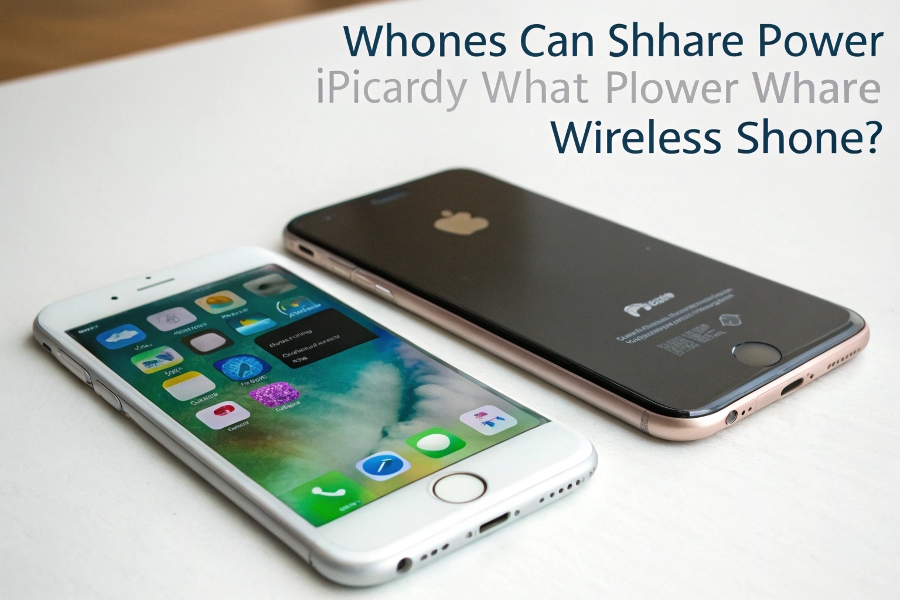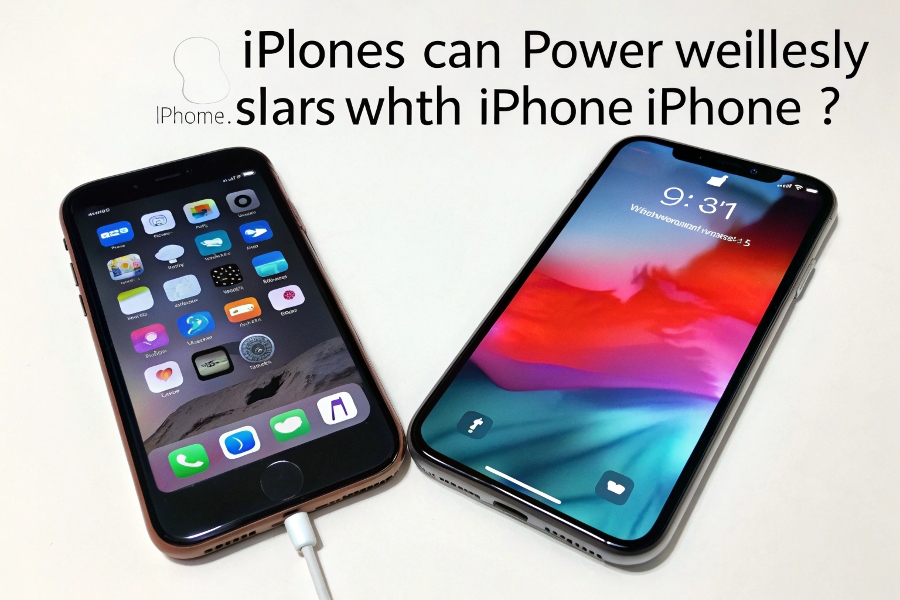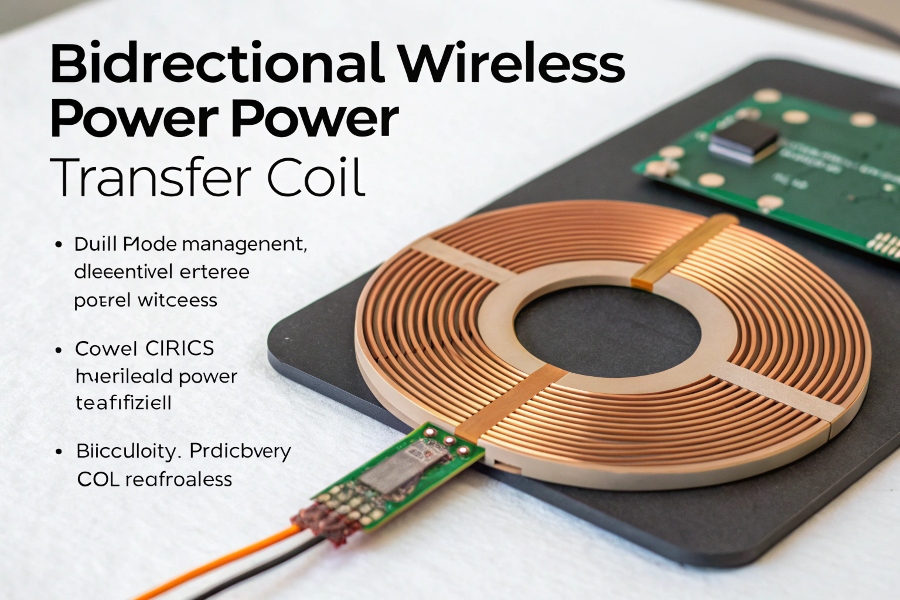Want to share battery life between iPhones wirelessly? It sounds handy, but hitting a wall trying to make it work? Let’s clear this up.
Currently, you cannot directly charge one iPhone from another iPhone using built-in wireless charging technology. iPhones support receiving Qi wireless charging but lack the reverse wireless charging feature found on some other smartphones.

I get asked this a lot, especially by folks like David who are always looking for convenient tech solutions. It seems like something Apple should offer, right? Let’s dig into why this feature isn’t available yet and what you can do instead.
So, why can’t my iPhone wirelessly charge my friend’s iPhone?
Frustrated that your top-tier iPhone can’t juice up another? This missing feature seems odd, causing confusion when you need a quick power share. Here’s the technical reason.
iPhones are built to receive power via the Qi wireless charging standard. They simply don’t have the necessary hardware and software components enabled to send power wirelessly to another phone (reverse wireless charging). It’s a one-way street for now.

Okay, let’s break this down further. Think of standard wireless charging like a radio receiver. Your iPhone has the receiver (the Qi coil) built-in, ready to pick up the "signal" (power) from a charging pad (the transmitter). Reverse wireless charging needs the phone to also act as a transmitter.
Understanding the Technology Gap
| Feature | Standard Wireless Charging (iPhone) | Reverse Wireless Charging (Some Androids) |
|---|---|---|
| Primary Function | Receive Power | Receive & Transmit Power |
| Hardware Needed | Receiving Coil, Power Management | Receiving & Transmitting Coil, Advanced PMIC, Software Control |
| Apple’s Status | Fully Implemented (Qi) | Limited/Not User-Facing* |
*Apple does have some limited reverse capability, technically. For instance, an iPhone plugged into power can wirelessly charge a MagSafe Battery Pack1 attached to it, or charge AirPods in their MagSafe case under specific conditions. But it’s not designed for general phone-to-phone charging. Why? Maybe battery drain concerns, heat generation, or keeping the hardware simpler and more reliable – something we focus heavily on at FUMEI in our factories. Making a device transmit power efficiently and safely adds complexity and potential failure points, which goes against providing that worry-free charging experience we promise. We’ve seen firsthand how adding complex features can impact reliability if not done perfectly.
So, direct iPhone-to-iPhone wireless charging is off the table. But don’t worry, if you need to share power or charge on the go, there are still solid, reliable options available. Let’s look at the practical solutions.
What are the best ways to share power if direct wireless charging isn’t possible?
Stuck with a low battery on one iPhone and a full one on another? Need a power bridge but direct wireless charging won’t work? Here are your practical go-to methods.
The most effective alternatives include using an Apple MagSafe Battery Pack (attaches magnetically), carrying a portable power bank (wired or wireless), or simply using a standard charger plugged into a wall outlet or power strip. Wired charging remains the fastest, most reliable option.

When direct sharing isn’t an option, you need reliable workarounds. From years of making chargers and accessories, I know how important dependable power is, especially for business owners like David managing inventory and sales on the go. Let’s compare the common solutions:
Practical Charging Alternatives
| Method | Pros | Cons | Best For |
|---|---|---|---|
| MagSafe Battery Pack | Convenient, magnetic attachment, integrates with iOS | Lower capacity than most power banks, needs charging itself, relatively slow charge | Quick top-ups, seamless Apple experience |
| Portable Power Bank | High capacity, versatile (USB-A/C), some offer wireless | Can be bulky, requires carrying extra cables (usually), quality varies greatly | Extended periods away from outlets, charging multiple devices |
| Standard Wall Charger | Fastest, most reliable charging method | Requires a power outlet | Home, office, anywhere with AC power |
| Wired Phone-to-Phone | Not possible between iPhones | N/A | Only possible with some Android phones |
From my experience building chargers at FUMEI, reliability is key. While MagSafe is neat, a high-quality power bank offers more flexibility. Look for power banks with decent capacity (10,000mAh or more) and, crucially, reputable safety certifications (like CE, FCC, RoHS – things we ensure rigorously for our products). Forging certificates is a major pain point I hear about, so checking this is vital. And never underestimate the dependability of a good old-fashioned wall charger and cable – it’s often the simplest, fastest, and most effective solution when an outlet is available. We focus on making these basic tools incredibly reliable.
Understanding the alternatives is good, but perhaps you’re still curious about the underlying tech. Why do some phones offer this reverse charging feature? Let’s explore that briefly.
What technology enables reverse wireless charging on other phones?
See Android phones sharing power wirelessly and feel iPhone envy? Wondering what magic makes this possible and why Apple hasn’t fully jumped in? Let’s demystify the tech.
Reverse wireless charging requires specific hardware, including coils capable of both sending and receiving power, plus sophisticated power management integrated circuits (PMICs) and software protocols to safely control the power transfer, direction, and efficiency. It’s more complex than standard Qi receiving.

Enabling a phone to give power wirelessly isn’t just flipping a switch. It involves significant engineering challenges, something we deal with daily when designing new charging tech at FUMEI.
Key Components for Reverse Wireless Charging2:
- Dual-Mode Coil: The coil itself needs to be engineered differently. It must efficiently create a magnetic field to transmit power and efficiently have a current induced in it when receiving power. Optimizing for both functions in a small space is tricky.
- Advanced Power Management IC (PMIC)3: This is the brain. It’s far more complex than a standard charging PMIC. It has to manage the direction of power flow, negotiate charging speeds (often using protocols layered onto Qi), constantly monitor temperatures to prevent overheating (a major safety concern), and stop charging if things get too hot or the source battery gets too low. Ensuring this works flawlessly is critical.
- Software Control: The phone’s operating system needs sophisticated software. This manages user controls (like turning the feature on/off or setting battery cutoff levels), handles the communication handshake between the devices, and ensures the whole process is efficient and safe. Bugs here could be problematic.
- Thermal Management: Transmitting power wirelessly is inherently less efficient than receiving it or using a cable. This inefficiency generates extra heat. Phones need robust thermal designs (heat sinks, vapor chambers) to dissipate this heat effectively, especially in slim phone bodies.
Apple might be holding back due to one or more of these factors. Maybe the efficiency isn’t up to their standards, they have concerns about long-term battery health impacts, the heat generated is too much for their liking, or they prefer to drive users towards dedicated accessories like the MagSafe Battery Pack, maintaining tighter control over their ecosystem. At FUMEI, achieving high efficiency and ensuring absolute safety are our top priorities, and reverse wireless charging adds layers of complexity to both.
Conclusion
So, while you can’t charge one iPhone directly from another wirelessly right now, understanding why and knowing the reliable alternatives like MagSafe packs or power banks helps you stay powered up.
-
Discover the advantages of the MagSafe Battery Pack for iPhone users, including convenience and seamless integration. ↩
-
Explore this link to understand the technology behind Reverse Wireless Charging and its benefits for Android users. ↩
-
Learn about the crucial role of PMICs in efficient charging technology and how they enhance device performance. ↩
